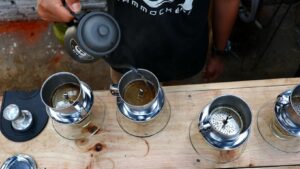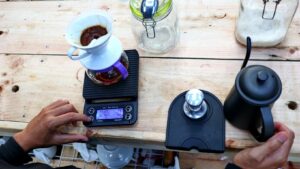 Embarking on the journey of brewing your own beer can be a rewarding and creative experience. Understanding the essential brewing steps is crucial to crafting a delicious and unique brew. From selecting the finest ingredients to mastering the art of fermentation, each step plays a vital role in the final product’s flavor profile. Exploring the intricate process of brewing unveils a world of possibilities for enthusiasts looking to delve into the craft. Whether it’s mashing the grains to extract sugars or carefully monitoring the temperature during fermentation, every detail contributes to the complexity and depth of the brew. By following these brewing steps diligently, one can elevate their homebrewing game and produce beverages that tantalize the taste buds.
Embarking on the journey of brewing your own beer can be a rewarding and creative experience. Understanding the essential brewing steps is crucial to crafting a delicious and unique brew. From selecting the finest ingredients to mastering the art of fermentation, each step plays a vital role in the final product’s flavor profile. Exploring the intricate process of brewing unveils a world of possibilities for enthusiasts looking to delve into the craft. Whether it’s mashing the grains to extract sugars or carefully monitoring the temperature during fermentation, every detail contributes to the complexity and depth of the brew. By following these brewing steps diligently, one can elevate their homebrewing game and produce beverages that tantalize the taste buds.
Brewing Steps
Brewing beer at home involves several crucial steps that play a significant role in achieving a delicious and unique end product. Each stage in the brewing process requires attention to detail and precision to ensure the better possible outcome. By following these essential brewing steps, individuals can master the art of homebrewing and create exceptional beverages tailored to their preferences.
1. Sanitizing Equipment
To start the brewing process, it’s essential to sanitize all equipment thoroughly. This step helps eliminate any harmful bacteria and ensures a clean environment for brewing. By sanitizing fermenters, airlocks, tubing, and other brewing tools, homebrewers can prevent contamination and maintain the quality of their beer.
2. Mashing Grains
Mashing involves soaking crushed grains in hot water to extract fermentable sugars, which are vital for the fermentation process. Controlling the mash temperature is crucial to activate enzymes that break down starches into sugars. This step influences the beer’s body, flavor, and mouthfeel, making it a critical stage in the brewing process.
3. Boiling the Wort
After mashing, the next step is boiling the wort, the liquid extracted from the mashed grains. Boiling helps extract flavor and bitterness from hops, sterilizes the wort, and stabilizes the final product. It’s essential to watch the boil carefully, adding hops at specific times to achieve the desired aroma and bitterness in the beer.
4. Cooling and Fermentation
 Once the boil is complete, the wort needs to be rapidly cooled to a suitable temperature for yeast pitch. Pitching yeast when the wort is too hot can kill the yeast, affecting fermentation. After pitching the yeast, fermentation begins, converting sugars into alcohol and carbon dioxide. Proper temperature control during fermentation is essential to produce a clean and flavorful beer.
Once the boil is complete, the wort needs to be rapidly cooled to a suitable temperature for yeast pitch. Pitching yeast when the wort is too hot can kill the yeast, affecting fermentation. After pitching the yeast, fermentation begins, converting sugars into alcohol and carbon dioxide. Proper temperature control during fermentation is essential to produce a clean and flavorful beer.
After fermentation is complete, the beer undergoes conditioning, which allows flavors to mellow and mature. The beer can be conditioned in a secondary fermenter or bottles, where carbonation occurs naturally. Carbonation adds effervescence to the beer, enhancing its mouthfeel and overall drinking experience.
5. Packaging and Enjoying
 Once the conditioning phase is finished, it’s time to package the beer in bottles or kegs. Proper packaging techniques help preserve the beer’s quality and extend its shelf life. Homebrewers can then enjoy the fruits of their labor by savoring their handcrafted brews with friends and family. Brewing excellent beer requires the right tools. Proper equipment setup and preparation are crucial for a successful brewing session. When embarking on a brewing journey, it’s vital to have the necessary equipment in place. Here are some key items required for a smooth brewing process:
Once the conditioning phase is finished, it’s time to package the beer in bottles or kegs. Proper packaging techniques help preserve the beer’s quality and extend its shelf life. Homebrewers can then enjoy the fruits of their labor by savoring their handcrafted brews with friends and family. Brewing excellent beer requires the right tools. Proper equipment setup and preparation are crucial for a successful brewing session. When embarking on a brewing journey, it’s vital to have the necessary equipment in place. Here are some key items required for a smooth brewing process:
- Brew Kettle: This is where the brewing magic happens. A large, stainless steel kettle is ideal for boiling ingredients.
- Fermenter: A vessel where the wort ferments into beer. It can be a plastic bucket or a glass carboy.
- Airlock and Stopper: These are essential for allowing carbon dioxide to escape during fermentation while preventing contaminants from entering.
By ensuring you have these essential pieces of equipment ready and properly set up, you set yourself up for a successful homebrewing experience.

